Bike fitting explained: Everything about the process, benefits & costs
|| 14 minutes || 2688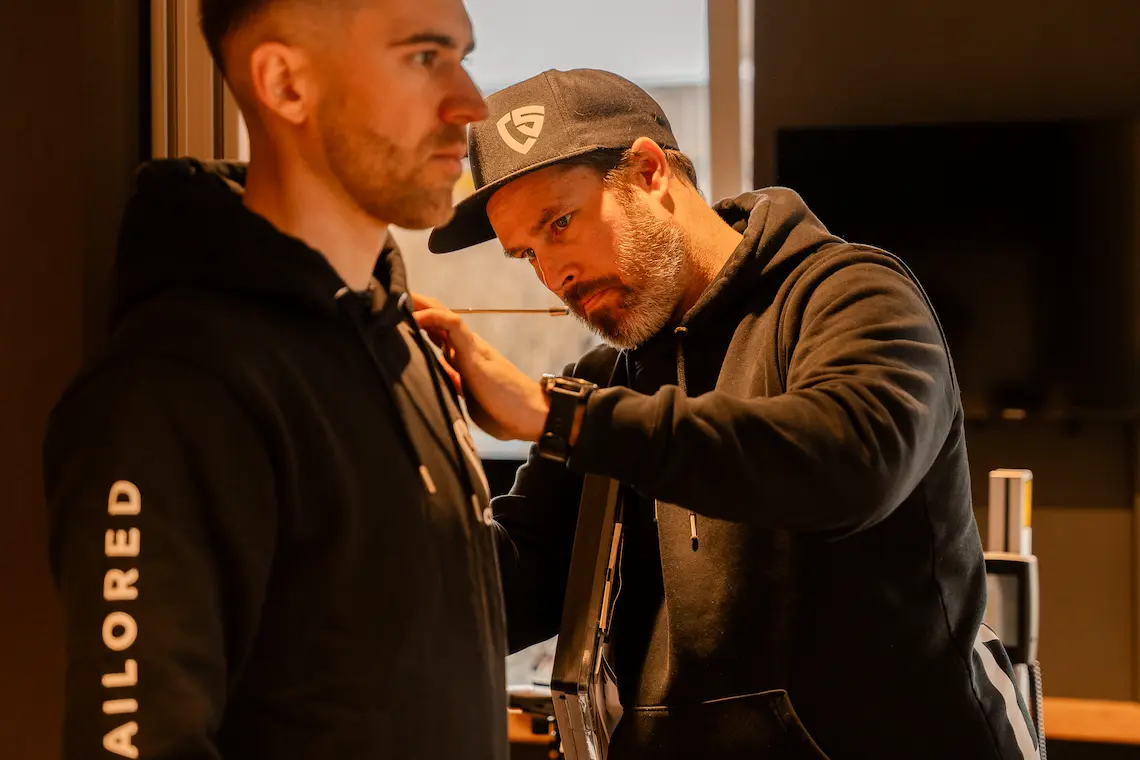
Imagine gliding effortlessly over the roads, without pain or discomfort – that’s the magic of the right bike fitting. At CSBikes, we have dedicated countless resources to find the perfect fit addressing your body's position on the bike. Let’s find out together how you can optimally adjust your bike to achieve the best riding position and maximize your riding experience. In this article, you’ll learn what bike fitting is, what the process looks like, what benefits it offers, and what costs you can expect.
What is Bikefitting?
Every bike is different – and so is every person. A bike fitting bridges the gap between rider and bike to prevent pain, increase safety and control, and enhance performance. At CSBikes.com, we see bike fitting as much more than just tightening a few screws – it’s a systematic process that focuses on the rider's biometric features, strengths, weaknesses, and physiology. By analyzing your body measurements, movement patterns, flexibility, and riding style, we recommend adjustments to your bike and plan a strategy to move you into a position to be comfortable, powerful, and safe.
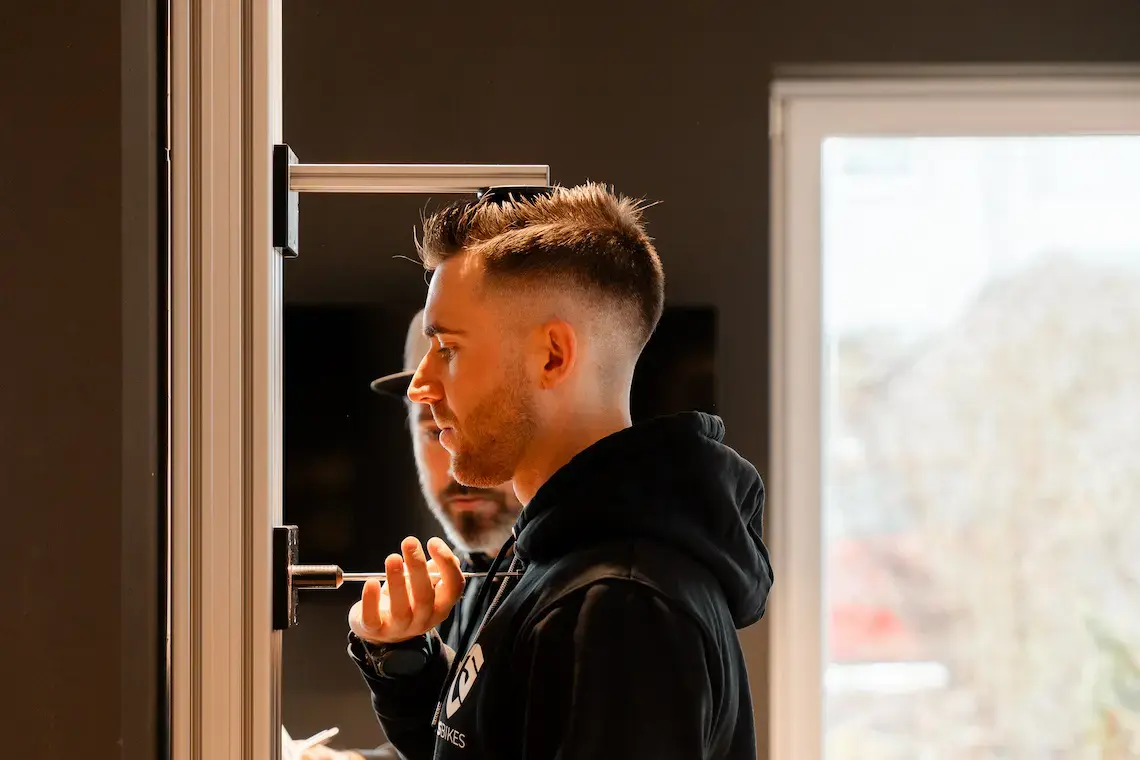
Our goal is to provide you with maximum performance, complete control, and pain-free riding. Whether it’s the saddle height adjustment, cleat positional change or your overall riding position needs to be modified – our team of professional cyclists and ergonomics experts ensures that your bike is perfectly with you.
Bike fitting is by no means only for ambitious athletes. Commuters, leisure cyclists, and touring enthusiasts can all benefit from the correct riding position. Issues like numb hands, back pain, or an uncomfortable saddle can be effectively addressed through a bike fitting session. CSBikes.com gets you moving – ergonomically, sustainably, and always with a focus on your health and enjoyment.
The Most Important Steps of a Bike Fitting
At CSBikes, the bike fitting process follows a structured process to provide you with the ideal riding experience. Here are the six most important steps:
1. Rider Analysis: In a relaxed conversation, we get to know you as a rider. We discuss your goals, preferences, and past experiences to gain a comprehensive understanding of your needs. This step forms the foundation for all further adjustments.
2. Biometric Measurement & Assessment: Using precise measurement devices and a series of tests, we record your biometric data, such as height, inseam length, sit bone width, natural joint movements, and flexibility. These measurements serve as a benchmark for our fit window, additionally we uncover discrepancies that could affect your overall comfort on a bike.
3. Cleat Fit Assessment & Initial Adjustment: During a cycling cleat fit analysis and adjustment, you can expect a comprehensive evaluation of how your cycling shoes and cleats are positioned on the pedals to ensure optimal alignment and power transfer. We take a detailed assessment of your foot structure, leg alignment, and ankle alignment. Using laser alignment tools will analyze your natural foot placement, stance width, and how your joints (hip, knee, and ankle) move naturally. The goal is to optimize comfort, prevent hotspots or knee pain, and correct any biomechanical issues that could affect performance or cause discomfort during long rides. These adjustments stand as the baseline, minor changes may occur when collecting the remaining data from the fitting process.
4. Dynamic Pedal Analysis: With the collected biometric data we can start 1 of 2 ways, using our algorithm’s fit window or start with your existing bike. While you pedal on our in-ride adjustable fitting bike, you can expect an in-depth evaluation of how effectively you generate and apply power throughout the pedal stroke. With the use of advanced sensors, we measure the force and direction of your pedaling in real-time. The result is a detailed picture of power output, pedal stroke efficiency, and any imbalances between the left and right legs. This is known as power vectoring and it specifically tracks the angle and magnitude of the applied forces, helping to identify where power is lost due to improper technique or misalignment. We optimize your pedal stroke for smoother and more efficient power transfer, reduce energy waste, and enhance overall performance. Once this position has been found we focus our attention on your joint angles, hand position, seating position, and back back angle. In real time, we make adjustments to the overall body position to achieve the optimal fit.
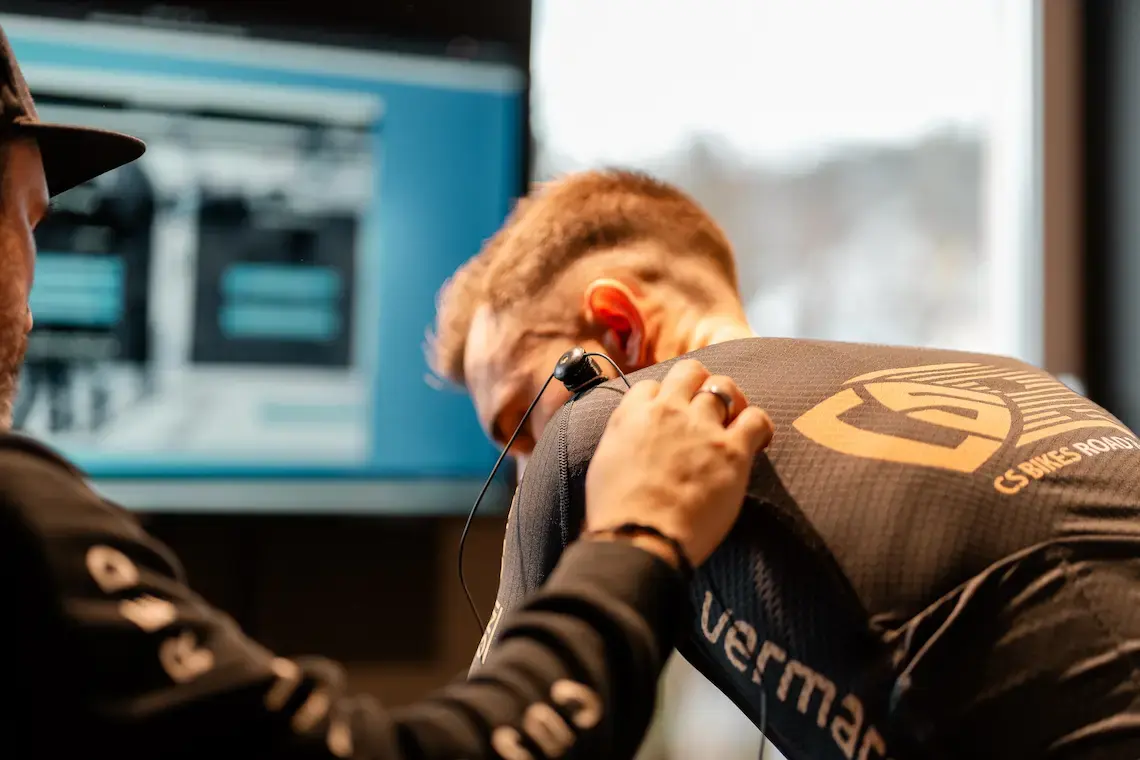
5. (Optional) 3D Motion Capture or Dynamic Motion Capture Analysis: Additional fitting processes can include 3D Motion Capture or Dynamic Motion Capture Analysis which uses advanced 3 dimensional camera technology to assess a cyclist's biomechanics and movement patterns in real-time. This includes capturing the rider’s full body motion through the placement of sensors on the key anatomical landmarks, which are tracked by multiple infrared cameras or motion sensors. The captured data provides detailed insights into the rider's posture, joint angles, pedal stroke efficiency, and muscle activation throughout the cycling motion. We use this information to assess factors like power output, symmetry, and potential injury risks, enabling precise bike fitting adjustments and performance optimization. Additionally, it can highlight areas for improvement in technique and form to enhance efficiency and prevent strain or injury. This process is typically only required for competition conscious athletes looking for a performance edge.
6. (Optional) Saddle Pressure Mapping Analysis: When undergoing a cycling saddle pressure mapping analysis, you can expect a detailed evaluation of how your body interacts with the saddle while riding. The captured data displays how your weight is distributed across the saddle surface in real-time. As you pedal, the system records the pressure exerted at various points, highlighting areas of high pressure or imbalance that could lead to discomfort, numbness, or potential injury over time. The analysis provides visual maps and metrics to help identify issues with saddle shape, positioning, or bike fit.
7. Results and Recommendations:
Together we will review your results and explain the final position in detail. We will make personalized recommendations for all of the adjustments and/or replacement parts required to find the previous ridden position, helping you achieve a more comfortable and efficient riding position.
Pain-Free, Controlled Power: What a Bike Fitting Really Does for You
Have you ever struggled with aching knees, back pain, or numb hands while cycling? These issues often arise because the bike isn’t properly adjusted to your body. A bike fitting helps address these problems directly.
By optimizing your riding position, your body is properly supported, and discomfort caused by poor posture becomes a thing of the past. Knee, back, and wrist pain are reduced or completely avoided. At the same time, the perfect position provides an entirely new riding experience: you sit more comfortably and pedal more efficiently – ideal for longer rides or your daily commute.
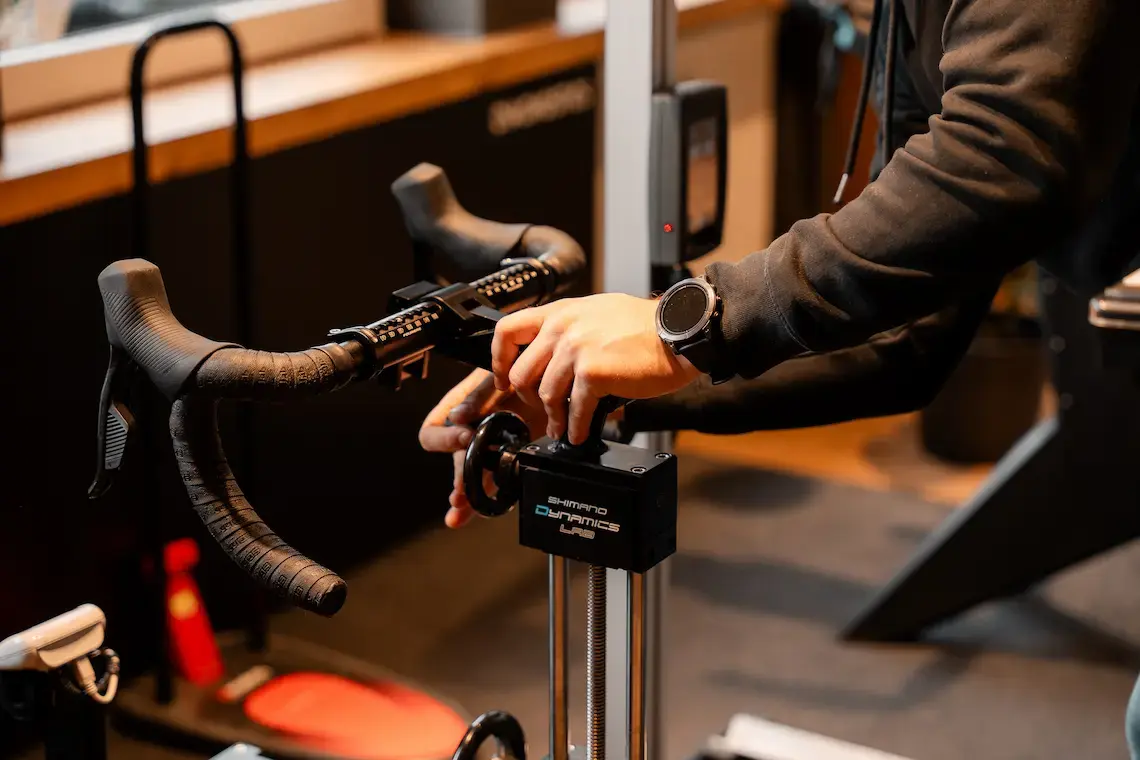
For ambitious cyclists, a bike fitting offers an additional clear advantage: it boosts performance. Optimized movement patterns ensure that you can use your energy effectively without overexerting yourself.
However, the true benefit of a bike fitting goes even further: it enhances your enjoyment of cycling – sustainably and in the long term. Whether you're riding short distances or spending hours in the saddle, with a personalized bike fitting, you can prevent pain or address existing issues while achieving optimal adjustments for your riding style. Why endure pain when you can get back to riding comfortably with a professional bike fitting?
Common Complaints of Cyclists and Solutions through Bike Fitting
| Issue | Cause | Solution via Bike Fit |
|---|---|---|
| Knee Pain | Saddle Position | - Biometric Measurement & Assessment - Dynamic Pedal Analysis- Dynamic Motion Capture Analysis |
| Poor Cleat Position | - Cleat Fit Assessment & Initial Adjustment | |
| Saddle Fore/Aft Position | - Dynamic Pedal Analysis- Dynamic Motion Capture Analysis | |
| Crank length | - Biometric Measurement & Assessment - Dynamic Pedal Analysis- Dynamic Motion Capture Analysis | |
| Back Pain | Incorrect Frame Geometry or Size | - Biometric Measurement & Assessment - Dynamic Pedal Analysis- Dynamic Motion Capture Analysis |
| Virtual Reach | - Biometric Measurement & Assessment - Dynamic Pedal Analysis- Dynamic Motion Capture Analysis | |
| Saddle Tilt and/or Position | - Dynamic Pedal Analysis- Dynamic Motion Capture Analysis- Saddle Pressure Mapping Analysis | |
| Rider Balance | - Dynamic Pedal Analysis- Dynamic Motion Capture Analysis | |
| Saddle Style or Size | - Saddle Pressure Mapping Analysis | |
| Neck & Shoulder Pain | Handlebar Position & Size | - Biometric Measurement & Assessment - Dynamic Pedal Analysis- Dynamic Motion Capture Analysis |
| Grip or Shifter position | - Biometric Measurement & Assessment | |
| Saddle/Handlebar Drop | - Dynamic Pedal Analysis- Dynamic Motion Capture Analysis | |
| Virtual Reach | - Biometric Measurement & Assessment - Dynamic Pedal Analysis- Dynamic Motion Capture Analysis | |
| Saddle Fore/Aft Position | - Dynamic Pedal Analysis- Dynamic Motion Capture Analysis | |
| Frame Geometry | - Biometric Measurement & Assessment - Dynamic Pedal Analysis- Dynamic Motion Capture Analysis | |
| Hand & Wrist Pain | Grip or Shifter position | - Biometric Measurement & Assessment |
| Saddle/Handlebar Drop | - Dynamic Pedal Analysis- Dynamic Motion Capture Analysis | |
| Virtual Reach | - Biometric Measurement & Assessment - Dynamic Pedal Analysis- Dynamic Motion Capture Analysis | |
| Frame Geometry | - Biometric Measurement & Assessment - Dynamic Pedal Analysis- Dynamic Motion Capture Analysis | |
| Numbness or Pain in Saddle | Incorrect Saddle | - Saddle Pressure Mapping Analysis - Biometric Measurement & Assessment |
| Saddle Position | - Saddle Pressure Mapping Analysis - Biometric Measurement & Assessment - Dynamic Pedal Analysis- Dynamic Motion Capture Analysis | |
| Rider Balance | - Saddle Pressure Mapping Analysis - Biometric Measurement & Assessment - Dynamic Pedal Analysis- Dynamic Motion Capture Analysis |
How much does a bike fitting cost?
The cost of a bike fitting varies depending on the provider, region, and scope of services.
A basic bike fitting, where adjustments such as saddle height, handlebar position, and cleat alignment are made, typically costs between 100 and 150 euros.
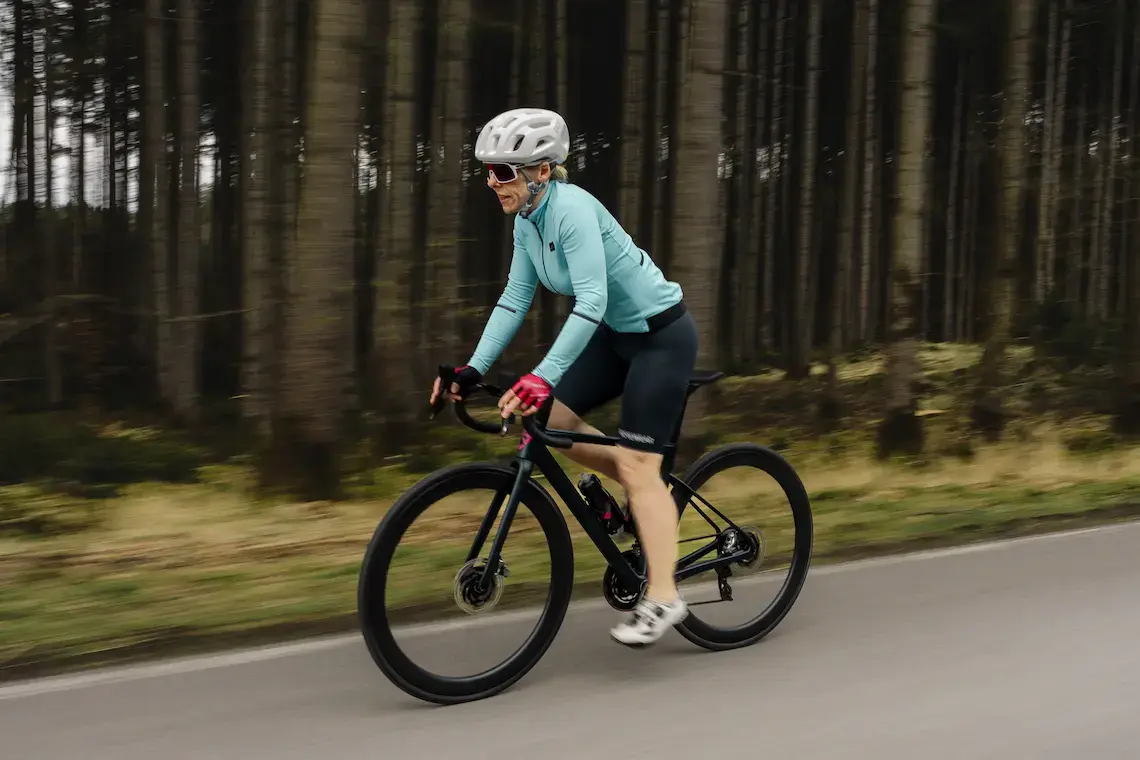
For a more comprehensive fitting using advanced technologies like 3D motion capture or pressure measurements, you should expect to pay between 250 and 400 euros. These high-end services can take 2 to 4 hours and often include a complete analysis of your seating position, movement patterns, and pedaling technique.
The cost of a bike fitting at CSBikes depends on the services provided and the technology used. Various options are available, ranging from basic seating adjustments to full 3D analysis.
| Leistung | Dauer | Preis |
|---|---|---|
| 2D Static BikeFitting | 45 Minuten | 99,99 € |
| 2D Dynamic BikeFitting | 1,5 Stunden | 199,99 € |
| Custom BikeFitting (bei Kauf) | 2 Stunden | Inklusive |
| 3D PRO Dynamic BikeFitting | 2,5 Stunden | 399,99 € |
A bike fitting is beneficial for everyone
Whether you cycle occasionally or train regularly, a bike fitting offers value for everyone. A bike fitting is suitable for all cyclists who want to experience more comfort, efficiency, and fun while riding – regardless of their experience level or the type of bike they ride.
For recreational cyclists, a bike fitting can help prevent discomforts like back pain or numb hands, which can occur even on short rides. In this case, an ergonomic riding position provides greater comfort and more relaxed outings, whether on an evening ride or a family excursion.
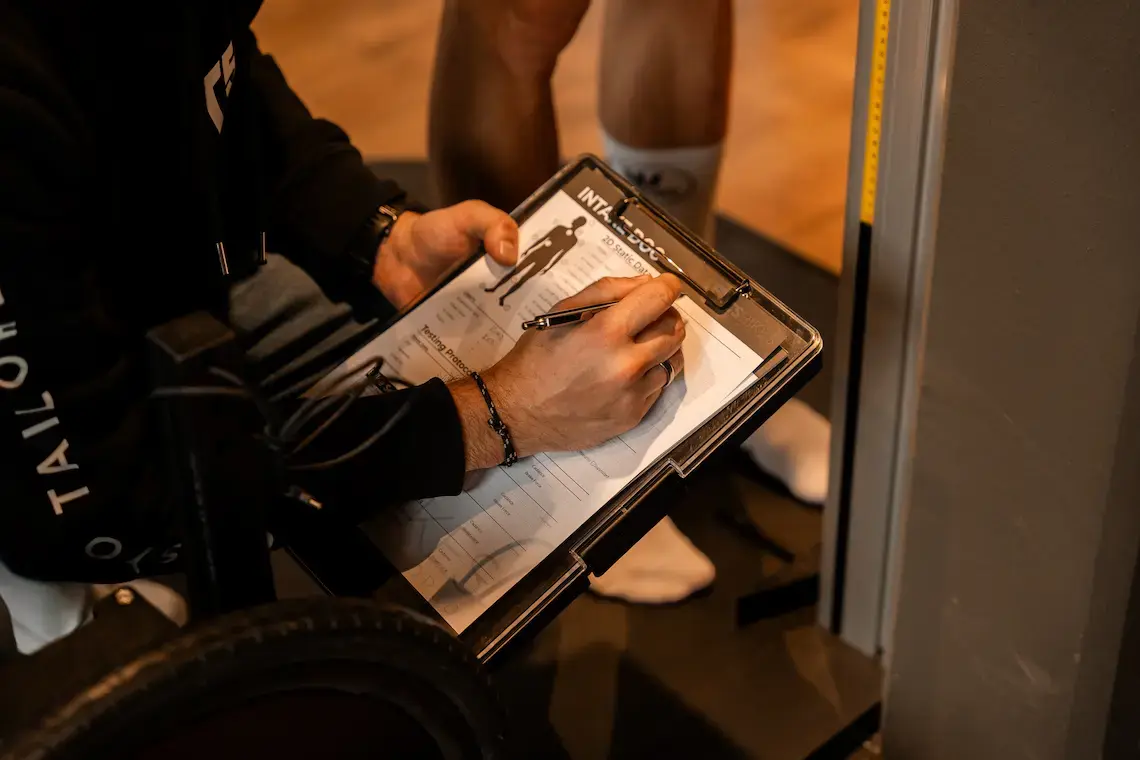
Road cyclists, in particular, benefit from an optimal riding position, as they often ride in an aerodynamic posture. A bike fitting enhances the efficiency of each pedal stroke, improves power transfer, and prevents overuse injuries – all crucial for achieving peak performance in training or competition.
For mountain bikers, a bike fitting is equally valuable. The correct adjustment of handlebars, pedals, and saddle ensures better control on technical trails and reduces the risk of injury caused by poor posture.
A bike fitting is an investment that pays off – for your health, your performance, and your enjoyment of cycling.
Nicholas Schick, an American residing in Germany, is the founder of CSBikes and has served as Geschäftsführer since 2020. With 15 years of fitting experience, he pioneered the fitting concepts that now guide all operations at CSBikes. His approach includes a comprehensive preparatory fitting process, utilizing Dynamic 3D motion systems, pedaling analysis, and pressure mapping and is certified by Shimano-Labs BikeFitting, SQ-Labs, and ID-Match.

